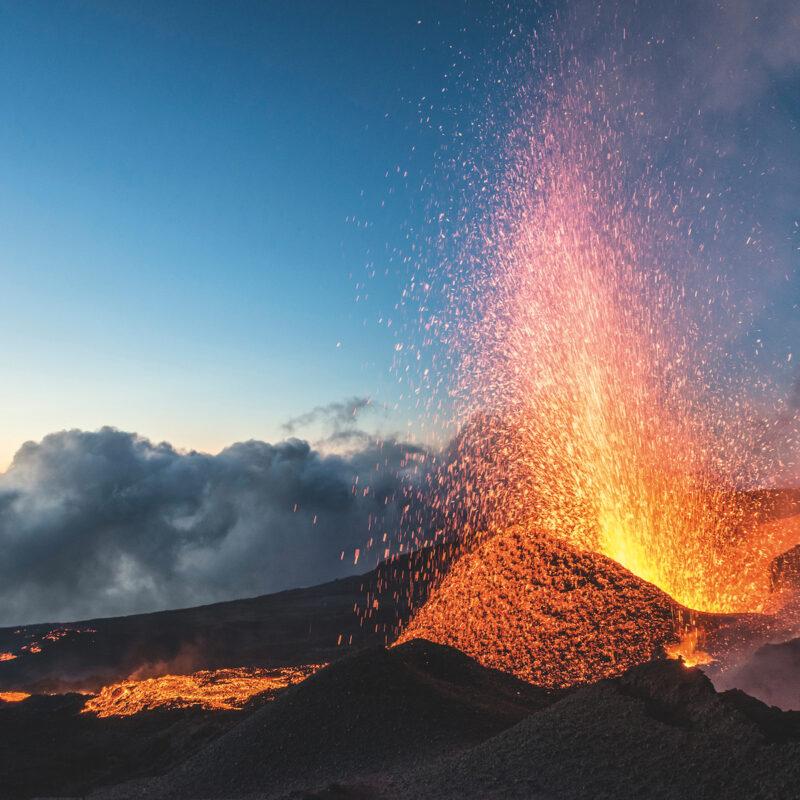Africa-Press – Mauritius. It was dark when our plane descended through the clouds and landed on Réunion Island. It was slightly disconcerting arriving after dark. I couldn’t see the beaches, the mountains, or anything that looked remotely tropical. Instead, aside from the humidity, I could very well have arrived in Europe, which technically, I had.
Réunion is a tiny little piece of France in the Indian Ocean! I somehow made my way through customs and immigration, collected my bag, and found my taxi, all without speaking a word of English; before setting off into what, for me, was a completely unknown destination.
I’d gone to Réunion Island to take part in Xterra Réunion, an off-road triathlon race, and had done absolutely no research about my destination before I boarded my flight.
I’m here to tell you now some of the things I wish I’d known before I’d got there. But first, some basic facts: Réunion Island Aerial view. PHOTO CREDIT: RÉUNION ISLAND TOURISM BOARD
1.
Location
Réunion Island in the Indian Ocean is an overseas department/region of France. It is located approximately 340 miles east of Madagascar and 109 miles southwest of Mauritius.
2. Population
As of January 2021, Réunion had a population of 858,450. 3.
Language
As in the rest of France, the official language of Réunion is French. In addition, a majority of the population speaks Réunion Creole. Montagne mafate Cap Noir.
PHOTO CREDIT: RÉUNION ISLAND TOURISM BOARD
4. A Brief History
Little was known about the island, which was uninhabited prior to the arrival of the Portuguese, who landed here in 1513.
In the 1640s, the island was occupied by the French, who claimed it as their own, renaming it Ile Bourbon. The island was renamed Réunion in the 18th century, and became prosperous, along with the nearby island of Mauritius, because it was on the shipping routes between Europe and Asia.
Sugar plantations, worked by slaves imported from Africa, formed the major sector of the island’s economy. Slavery was abolished on December 20, 1848 (a date celebrated annually on the island), though indentured workers continued to be brought to Réunion from other places, predominantly South India.
The island was a French colony until 1946 when it was granted the status of “Overseas Department. ” Réunion is now one of the most far-flung parts of the European Union.
5. How To Get There
It isn’t easy to get to Réunion; there are few travel options and most of those are expensive.
One option is to fly from Mauritius; the flight is only 45 minutes. A one-way ticket from Mauritius to Réunion costs around 80 euros (around $93). Option two would be to take an Indian Ocean cruise.
That way you could combine Réunion with Madagascar, Seychelles, and Mauritius, though this would mean you wouldn’t have much time to totally experience the island.
The third option would be to look for a cheap flight. The cheapest is usually via Paris. A one-way ticket can be as little as 150 euros (around $175), which isn’t much for a 12-hour flight!
6. Best Time To Go
The best time to visit Réunion Island is May–November when the weather is generally dry and cool.
It starts to get hot and rainy from November–April. Réunion is known for its torrential rainfall, so it’s advisable to avoid the monsoon season. Cirque de salazie. PHOTO CREDIT: RÉUNION ISLAND TOURISM BOARD
7.
Getting Around
Possibly the most daunting experience of my entire Réunion visit was collecting my rental car on day one! Unaccustomed to driving on what was, for me, the “wrong” (left) side of the road and the “wrong” (left) side of the car, I was nervous as I took possession of the little white Peugeot that was supposed to get me around for the next few days.
I don’t have a great reputation with my family for certain aspects of my driving, particularly reverse! While I think their comments about my driving are vastly exaggerated, I was still rather apprehensive when it came to getting behind the wheel.
For those of you not used to left-hand drive, be forewarned. 8. What To Eat And Drink
Réunion offers a wide range of exotic food and drink. Eating is one of the favorite Réunionese activities and mealtimes are family occasions.
The island is a melting pot of cultures and nationalities. Indian, Chinese, French, Malagasy, and mainland African dishes have all been absorbed into and contributed to the island’s cuisine, making the local food interesting and exotic, but not too spicy or bizarre.
For More News And Analysis About Mauritius Follow Africa-Press







